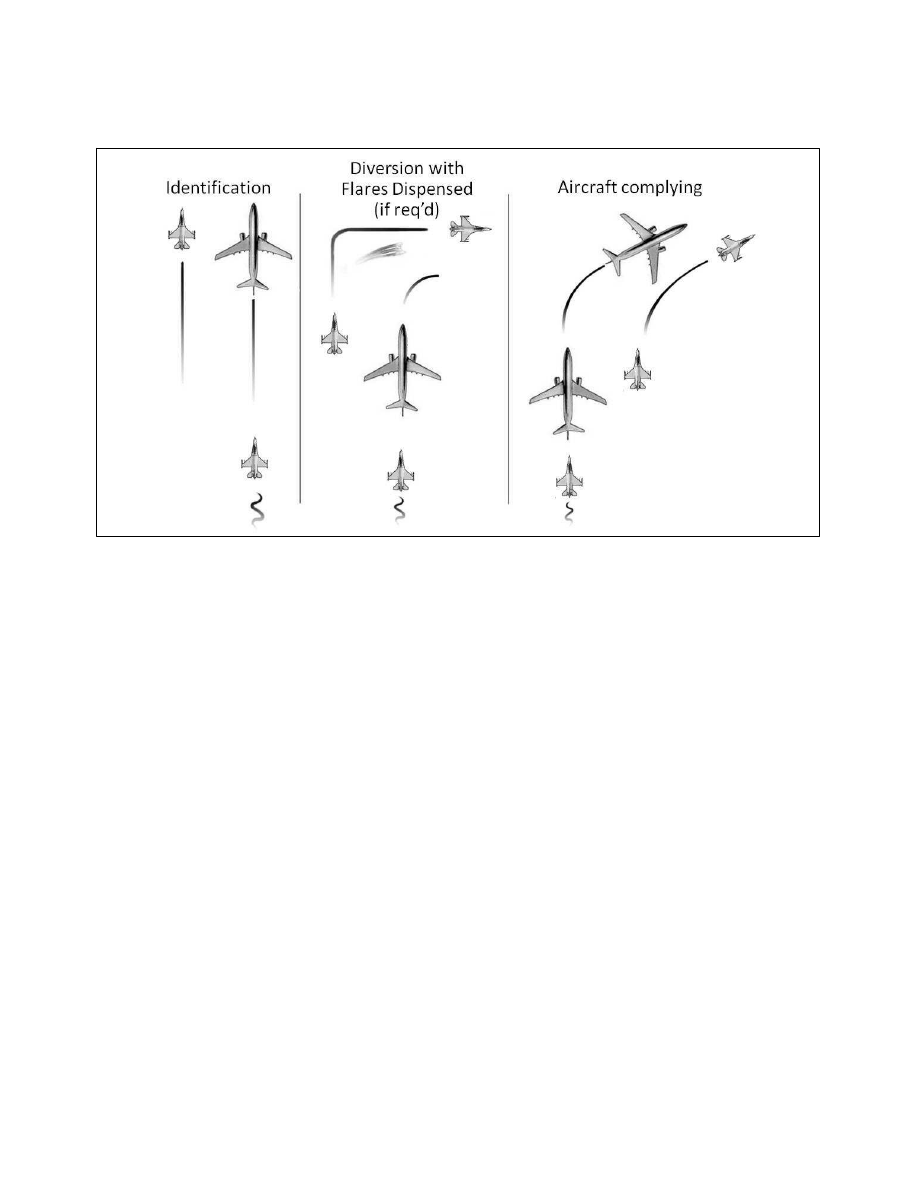
AIM
10/12/17
5
−
6
−
9
National Security and Interception Procedures
FIG 5
−
6
−
1
Intercept Procedures
c. Helicopter Intercept phases (See FIG 5
−
6
−
2)
1.
A
pproach Phase.
Aircraft intercepted by helicopter may be approached
from any direction, although the helicopter should
close for identification and signaling from behind.
Generally, the helicopter will approach off the left
side of the intercepted aircraft. Safe separation
between the helicopter and the unidentified aircraft
will be maintained at all times.
2. Identification Phase.
The helicopter will initiate a controlled closure
toward the aircraft of interest, holding at a distance no
closer than deemed necessary to establish positive
identification and gather the necessary information.
The intercepted pilot should expect the interceptor
helicopter to take a position off his left wing slightly
forward of abeam.
3. Post Intercept Phase.
Visual signaling devices may be used in an attempt to
communicate with the intercepted aircraft. Visual
signaling devices may include, but are not limited to,
LED scrolling signboards or blue flashing lights. If
compliance is not attained through the use of radios
or signaling devices, standard ICAO intercept signals
(Table 5-6-1) may be employed. In order to maintain
safe aircraft separation, it is incumbent upon the pilot
of the intercepted aircraft not to fall into a trail
position (directly behind the helicopter) if instructed
to follow the helicopter. This is because the helicopter
pilot may lose visual contact with the intercepted
aircraft.
NOTE
−
Intercepted aircraft must not follow directly behind the
helicopter thereby allowing the helicopter pilot to maintain
visual contact with the intercepted aircraft and ensuring
safe separation is maintained.